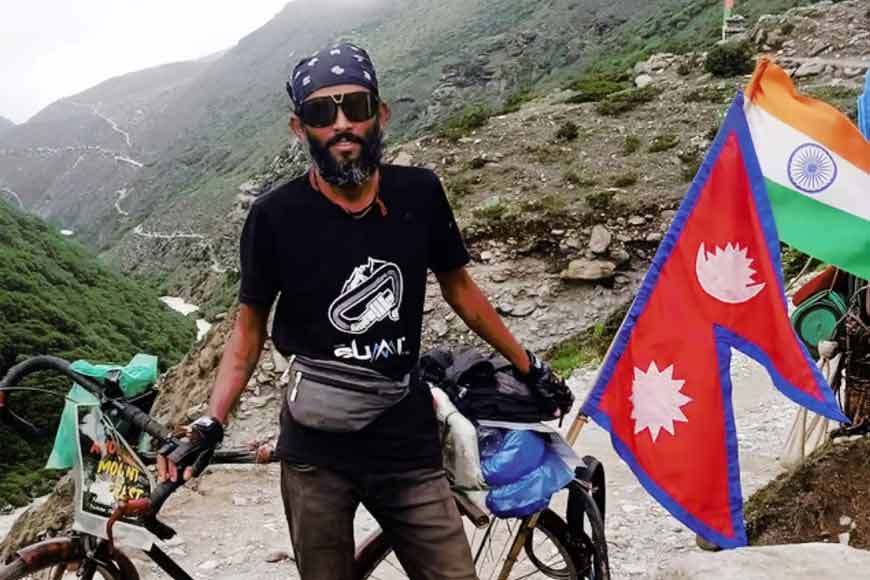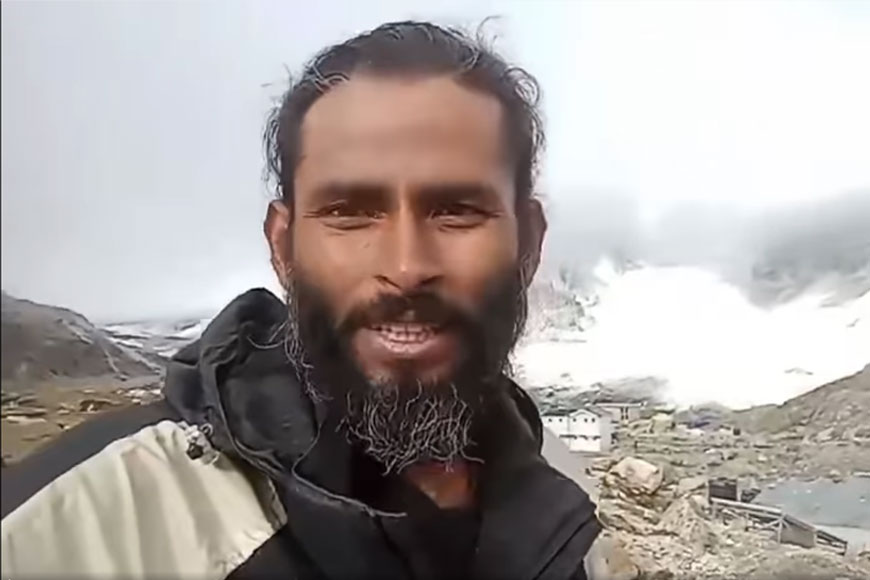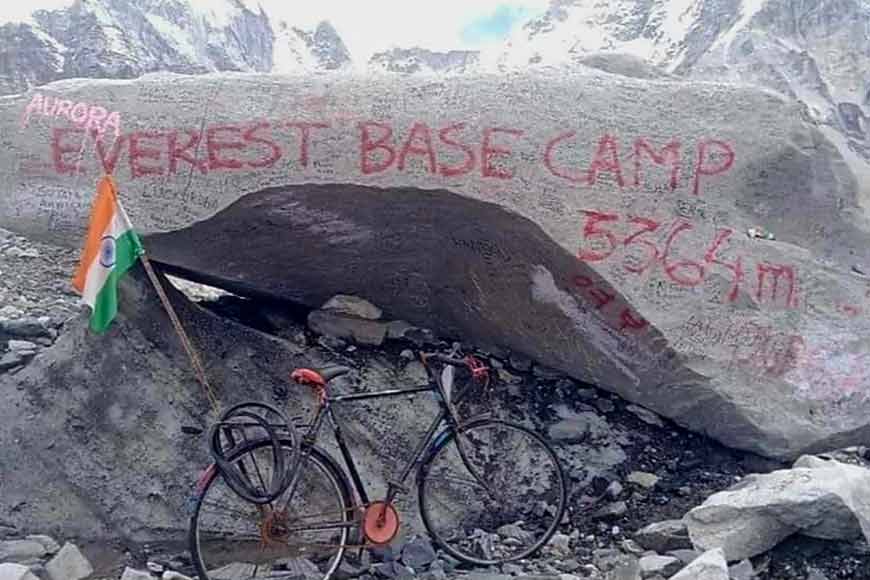The first Bengali cyclist’s expedition to Mt. Everest Base Camp creates history – GetBengal story

“Great things are done when men and mountains meet; this is not done by jostling on the street.”
William Blake
There is something about the mountains that has always spiked human curiosity. Their towering peaks, cloaked in mist and shrouded in mystery, call out to all adventurous spirits, compelling them to answer the call of the high peaks. They fill our rivers, sway the weather, and provide sanctuary to incredibly diverse wildlife. But these mountains are as dangerous as they are beautiful, and for a brave few, they are the source of incredible adventure.
Whether it is the exhilaration of conquering a mountain or the satisfaction of conquering one’s own fear, many humans have wanted their story stamped atop a lofty peak. Many of us have dreamt of conquering these mountains, like Tenzing Norgay and Edmund Hillary. However, not many of us are fortunate enough to convert these childhood fantasies into reality, caught as we are in the massive web of life, with its strands of career, family, and societal ties. Yet, there are some who have managed to make these stories their own reality. Here is the story of 34-year-old Tripura youth Bapi Debnath, also known as Neel, who lived his mountaineering dream and made history recently by becoming the third Indian (first Bengali cyclist) and eighth global cyclist to reach the South Base Camp of Mount Everest in Nepal on his single-gear bicycle. He completed this remarkable journey in 54 days.

Debnath, from Chandrapur in Agartala, is a proud alumnus of Tripura's Umakanta Academy School. He is a professional cinematographer and editor based in Kolkata, and he has been working here for quite some time now. Tired of the monotony of life in the concrete jungle, Debnath’s spirit felt trapped as he yearned for an opportunity to leave city life behind and answer the call of the wild. A bicycle enthusiast, Debnath had been planning to visit the Mount Everest Base Camp for some time, and finally, on May 21, 2024, he took the plunge. His bicycle expedition began. He had been planning his route map carefully, passing through major places such as Varanasi, Ayodhya, Saloni Border, Kathmandu, Gurmi, and Namche Bazaar before arriving at the South Base Camp on July 14 at 10.55 a.m. History was made.
There are two routes to Everest, each with its own base camp and unique camping experience. The North Ridge, on the Tibet side of the mountain, offers easier access. It is possible to drive vehicles all the way to base camp. A lot of the North Side expeditions begin in Kathmandu, Nepal, and extend across the border into China to reach the mountain.
The South Col route is accessed from Nepal and usually requires a week of trekking to reach the mountain base. Both camps are pitched in two mighty glacial valleys. To the north, the Tibet base camp is located below the terminal moraine of the Rongok Glacier. And to the south, the Nepal base camp is located on top of the rock-covered Khumbu Glacier.
Both camps are pitched at about 17,500 feet, for good reason. Somewhere between 18,000 and 19,000 feet, the human body enters a state of decay, above which life is not permanently sustainable. Scientifically and simply put, you don’t want to try living any higher than that.

The south base camp in Nepal is located at an altitude of 5,364 feet. Offering spectacular mountain scenery, the trek to the south base camp starts from Lukla in Nepal, travelling up to the Sherpa capital of Namche Bazaar, which is located at an elevation of 11,290 feet. Climbers usually halt here and get accustomed to the dropping oxygen levels. From there, the route takes hikers to Dingboche, then further via Gorakshep to Kala Patthar. This route is sometimes referred to as the 'Mother of all Himalayan Treks' because of its high altitude. It is a difficult route that requires a certain level of physical fitness and mental agility from a person.
Debnath’s long and arduous journey on his single-gear ordinary bicycle was fraught with innumerable challenges. He had to manoeuvre long stretches of narrow dirt roads with almost zero visibility, extreme weather conditions, and many other obstacles, but he was determined to complete the journey. He carried with him a toolkit, spare tyre, extra spokes to fix his bicycle during the journey, and a backpacking tent. For sustenance, he would eat boiled foods to avoid digestion issues caused by weather changes.
During his brief stopovers in various towns and cities in India, Debnath stayed at temples and roadside dhabas. At Kathmandu, he stayed at Ram Mandir and was pleasantly surprised at how enthusiastically he was welcomed. Debnath had not anticipated that he was setting a record on the journey. However, he was pleasantly surprised when officials at various checkpoints informed him of the fact.
Debnath dedicated the momentous accomplishment to his father, whose unconditional support fueled his journey. He also greeted the residents of Tripura and West Bengal and thanked all those who supported him. His journey has only fueled his fire and increased his thirst for adventure. He looks forward to many more such expeditions in the future! It is indeed true that the call of the wild can lead to the most profound and unforgettable journeys of our lives.










